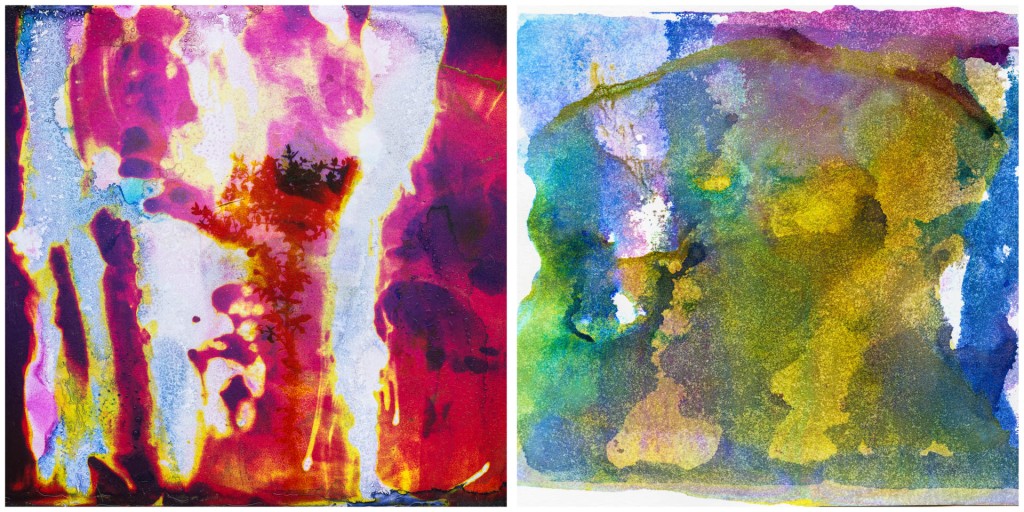2020-2018
Fotografía análoga intervenida con lejía y tinta / Analog photograph intervened with bleach and pigment (26)
El proyecto La conversión de la huella, trasmuta la percepción tangible de la naturaleza interviniendo imágenes fotográficas analógicas, alterando los componentes químicos esenciales de dicho soporte en los aspectos morfológicos y formales. La destrucción y mutación de sus propios materiales la alejan de su tradicional rol de representación, de ese modo se crea una linea más delgada entre la fotografía y la pintura, que se han visto comparadas en la historia del arte moderno y contemporáneo.
El proceso de La conversión de la huella empieza con fotografías de copia cromógena intervenidas con lejía. Este líquido ejerce un poder removedor el cual desprende fortuitamente los componentes químicos de su soporte, luego estos espacios en blanco o lavados son reemplazados por pigmentos. La lejía, compuesta por sales alcalinas y cloro, es corrosiva y trasparente, logra ser destructiva y silenciosa sobre la imagen fotográfica. La lejía desinfecta, borra las manchas, para eliminar rastros y así empezar en blanco. Con el vacío visual que genera se permite crear una nueva oportunidad para el paisaje, que donde las imágenes de La conversión de la huella surgen surreales, fantasiosas, mágicas y a la vez siniestras.
La obra toma el proceso de intervención fotográfica como una analogía entorno al cambio climático, en donde la materialidad del planeta ha sido alternada por el ser humano desde el Antropoceno, de un manera corrosiva, variando la superficie terrestre. Por otro lado, la obra también busca poner a prueba la resistencia del soporte fotográfico, como una entidad artística que se asocia con valores relacionados a la representación literal de las formas, en el caso de La conversión de la huella, la espectativa ante la percepción del paisaje.
The project La Conversion de la huella (Spanish for The Conversion of the Trace) transmutes the tangible perception of nature by intervening analog photographic images, altering the essential chemical components of the support in morphological and formal aspects. The destruction and mutation of its materials distance it from its traditional role of representation, thus creating a thinner line between photography and painting, which have been compared in modern and contemporary art history.
The process of La conversion de la huella begins with chromogenic copy photographs intervened with bleach. This liquid exerts a removing power, which fortuitously releases the chemical components of its support. Then, pigments replace these blank spaces or washes. Bleach, composed of alkaline salts and chlorine, is corrosive and transparent; it is destructive and silent in the photographic image. Bleach disinfects, erases stains, removes traces, and thus starts white. With the visual void it generates, it is possible to create a new opportunity for the landscape, where the images of La conversion de la huella emerge surreal, fantastical, magical, and simultaneously sinister.
The work takes the process of photographic intervention as an analogy to climate change, where humans have altered the materiality of the planet in a corrosive way since the Anthropocene, changing the Earth’s surface. On the other hand, the work also seeks to test the resistance of the photographic medium as an artistic entity associated with values related to the literal representation of forms; in the case of La conversion de la huella, expectation before perception from the landscape.


























